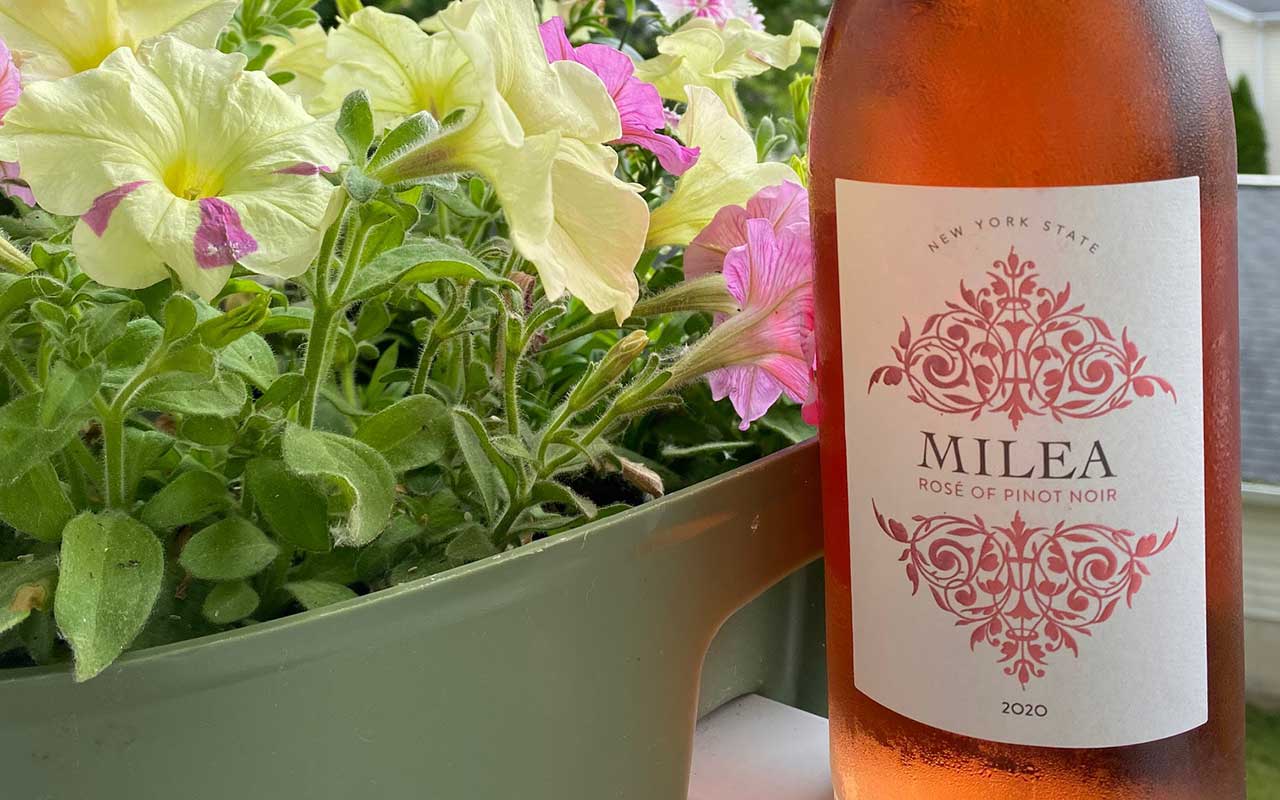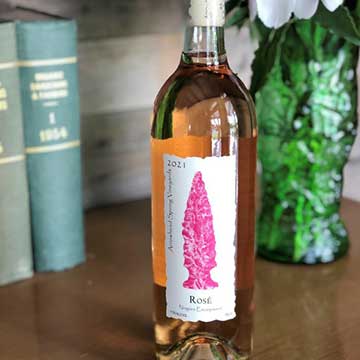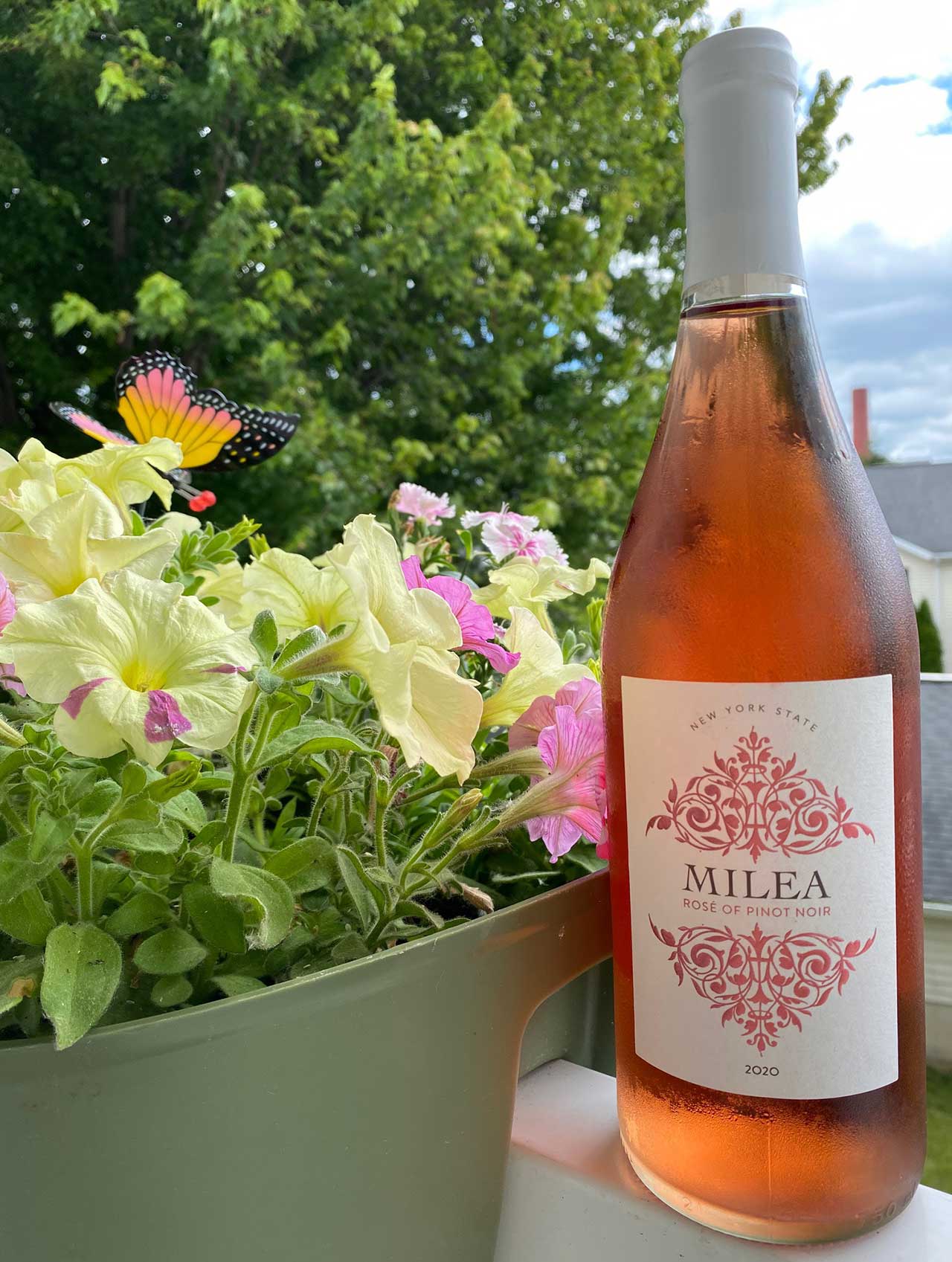This Month’s Featured Article

Yes Way Rose
 Memorial Day weekend was a glorious kick-off to summer this year, with bright blue skies and limitless sunshine and temps in the 80s. And here it is July already, with summer in full swing. When you’re in a soaking-up-the-sun mood, there’s nothing better than a glass of Rosé. It’s pretty to look at, is served very cold (perfect for hot days and nights), and pairs well with just about anything you’ll be eating outside (or in!), from salads to sandwiches to barbeque. It truly is a summertime best friend.
Memorial Day weekend was a glorious kick-off to summer this year, with bright blue skies and limitless sunshine and temps in the 80s. And here it is July already, with summer in full swing. When you’re in a soaking-up-the-sun mood, there’s nothing better than a glass of Rosé. It’s pretty to look at, is served very cold (perfect for hot days and nights), and pairs well with just about anything you’ll be eating outside (or in!), from salads to sandwiches to barbeque. It truly is a summertime best friend.
Rosés are soaring
Rosé wines have soared in popularity in the past decade, and their popularity doesn’t seem to be letting up. In fact, between 2010 and 2020, sales of Rosés from around the world increased over 1000% according to a report from a global market research company. There are many reasons for this, and research supports the speculations. Rosés appeal to women because they are so pretty and pink, in all different shades, like a beautiful garden. Rosés have the association of being a “fine wine,” too (lots more cache than a sweet, pink blush like a white zinfandel, for example), so there’s an element of glamour in a glass of Rosé. And they’re simply delicious and versatile.
Not surprisingly, for these reasons and more, celebrities are jumping on the Rosé band wagon, and their brands are trumpeted on social media sites, propelling further sales. Brad Pitt and Angelina Jolie are behind Miraval; Jon Bon Jovi is the source of Diving Into Hampton Water; friends Cameron Diaz and Catherine Power created the Avaline line of organic, natural wines, starting with a Rosé; Snoop Dog has a Rosé with the super-popular Australian brand 19 Crimes; and rapper Post Malone is in, with Maison No 9.
Celebrity backing is good for wines, because it guarantees a quality level. After all, would any of these folks – all high-quality brands themselves – put anything on the market that wasn’t in line with their own levels of expectation around quality? No. They can also afford to make very good wines right out the gate, and we’re the beneficiaries of that.
Where did it come from?
While celebrities and producers world-wide are elevating and legitimizing Rosés as go-to wines, those in the know know that Rosés were actually some of the first wines to hit humankind’s lips. It was the Phoenicians who got things started, some speculate as long ago as 1500 BC! It wasn’t a sophisticated or deliberate winemaking technique back then, it was simply a dilution of water added to wine made with red-wine grapes. It was typically hot in Phoenica (along the eastern coast of the Mediterranean), and water was often unsanitary. Fermented beverages like wine could often be very strong. Combining the two lessened the potential evils of both, and yielded an often enjoyable drink (well, that’s subject to interpretation … only can only hope so).
Phoenicians brought their wines and vines to southern France, eventually, which is how and why that area – Provence in particular – came to be associated with Rosés. Over milennia, as winemaking became more refined, winemakers found that quaffable, delightful, light-bodied yet full-flavored dry wines could be made with a variety of grapes of either single varietals (like Pinot Noir, for example), or blends. Not only could the blends produce lovely wines, combining already juiced grapes of all kinds and then turning them into Rosés was a way of getting everything possible out of the year’s precious harvest.
How are they made?
The reason Rosés are pink (many lovely shades of pink!), is because they are produced by the skins of red-wine grapes that have been left to macerate (soak) for a few days after those very grapes have been pressed off to make a red wine. A couple of days into maceration, the juice of the wine will be pink, picking up pigment from whatever grape(s) are being used. If the skins are left on for more than a few days, the juice will become increasingly darker in color. In most cases, more is not better, and winemakers will press off the macerated grapes sooner rather than later. Once pressed, the resulting juice will continue to ferment to make wine to the desired taste.
Vive la France
It was a French Rosé that got the party started here in the US. Mais oui! Whispering Angel was introduced in 2007 and quickly gained notoriety, especially with the posh Hamptons beach crowd on Long Island. The winery went from producing less than 1000 cases in 2007 to over 300,000 in 2017.
The French are still making some of the best Rosés in the world, and many of the celebrity Rosés mentioned in this piece are produced in France. Provence is rightly becoming proprietary about its Rosés. A Provencal Rosé is typified by its pale pink color and taste profile of being dry, minerally, and delicately fruity. Many grapes are grown in the region, which borders the Mediterranean Sea in the south of France.
Here, there, and everywhere
While Provence enjoys its reputation for being home to the quintessential Rosé, this delightful style of wine is now being made around the world and with all different kinds of grapes. Rosés are made with any number of grapes, from classic French Syrah/Cinsault blends to Argentinian Malbec, Italian Tempranillo, and even New Zealand Pinot Noir.
The United States is full-in where Rosés are concerned, with more and more being released along the west coast in states from California to Oregon; and from all parts of the East Coast. Here in New York, we’re lucky to have wonderful Rosés being made by wineries across the state, from the Finger Lakes to the Niagara Escarpment to Long Island to the Hudson Valley.
Home Sweet – no, dry! – Home
The best way to experience New York State Rosés is to taste them at the wineries where they are made and get the stories about them from the winemakers. You could spend all summer doing that, though, as just about every winery showcases a Rosé these days. Another option is to head to a nearby wine and liquor store with a large New York section and grab a selection to compare and contrast on your own. That’s what I did, and here are my selections and tasting notes.
Finger Lakes: Herman Weimer Dry Rosé.
A blend of 85% Pinot Noir and 15% Cabernet Franc from Weimer’s vineyards on Seneca Lake, this elegant, dry Rosé is bursting with notes of strawberry and watermelon while being deliciously dry. At just 12% alcohol, it’s a wine that you can sip and savor from cocktail hour through dinner.
Niagara Escarpment: Arrowhead Spring Vineyards Dry Rosé.
I’ve been a fan of Arrowhead Spring’s wines since tasting them nearly a decade ago. Owners Duncan and Robin Ross are all about their terroir and the grapes they grow on their farm in Lockport, NY, just ten miles as the crow files from Lake Ontario to the north, and about 30 miles from Lake Erie to the south. Their 2021 Rosé is a blend of estate-grown Cab Franc and Cabernet Sauvignon. The wine is very light garnet in color, with bright cherry and strawberry on the nose and a touch of spice on the finish.
Hudson Valley: Whitecliff Winery, Milea Estate Vineyard, Galway Rock Vineyard & Winery
I couldn’t help but try three from the Hudson Valley as all these wineries are easily accessible to us and produce such distinct yet lovely wines. Get to them if you can! Whitecliff’s dry Rosé is a luscious dark pink color with pronounced melon and berry notes. Milea’s Rosé of Pinot Noir is also a darker shade of pink. A wine that’s as pretty in the glass as on the palate, it pops with bright cherry notes typical of the Pinot Noir grape. Galway Rock makes its Rosé with a blend of white and red wine grapes rather than one made exclusively from red wine grapes. The color is like the pink from the inside of a seashell, delicate and vibrant. The combination of different grapes and wines used gives the wine a complexity while showcasing lots of summery fruit notes. The winery likes to call it “sunshine in a bottle.”
Long Island: Lenz Winery Firefly Rosé
Lenz has been making wine at its gorgeous location in Peconic since 1978 and is still a leader in the burgeoning Long Island wine scene. Their Firefly Rosé is made with a Bordeaux-style blend of Cabernet Sauvignon, Merlot, and Malbec, yielding a fruity complexity in a seemingly simple pale pink wine. A big floral nose yields notes of strawberry, hibiscus, and grapefruit.
I am totally sold on why Rosé wine is so popular. It has become my go-to summertime choice. No wonder the wine industry is speculating that Americans may soon
find the Rosé wine aisle in their stores to be equal in size to those of white and red wines. A votre santé in whatever way you say “Yes to Rosé!”



